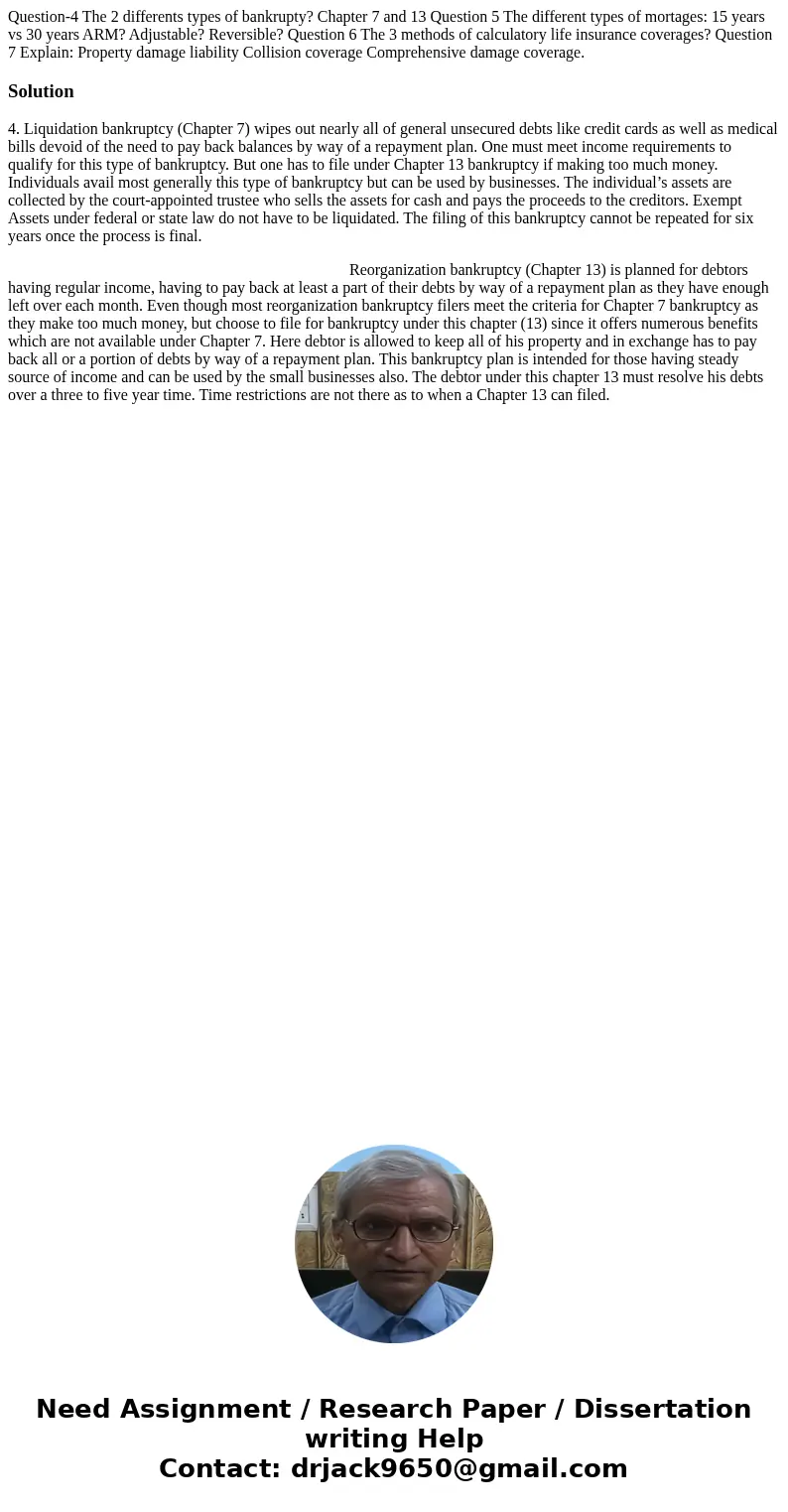Question4 The 2 differents types of bankrupty Chapter 7 and
Solution
4. Liquidation bankruptcy (Chapter 7) wipes out nearly all of general unsecured debts like credit cards as well as medical bills devoid of the need to pay back balances by way of a repayment plan. One must meet income requirements to qualify for this type of bankruptcy. But one has to file under Chapter 13 bankruptcy if making too much money. Individuals avail most generally this type of bankruptcy but can be used by businesses. The individual’s assets are collected by the court-appointed trustee who sells the assets for cash and pays the proceeds to the creditors. Exempt Assets under federal or state law do not have to be liquidated. The filing of this bankruptcy cannot be repeated for six years once the process is final.
Reorganization bankruptcy (Chapter 13) is planned for debtors having regular income, having to pay back at least a part of their debts by way of a repayment plan as they have enough left over each month. Even though most reorganization bankruptcy filers meet the criteria for Chapter 7 bankruptcy as they make too much money, but choose to file for bankruptcy under this chapter (13) since it offers numerous benefits which are not available under Chapter 7. Here debtor is allowed to keep all of his property and in exchange has to pay back all or a portion of debts by way of a repayment plan. This bankruptcy plan is intended for those having steady source of income and can be used by the small businesses also. The debtor under this chapter 13 must resolve his debts over a three to five year time. Time restrictions are not there as to when a Chapter 13 can filed.

 Homework Sourse
Homework Sourse